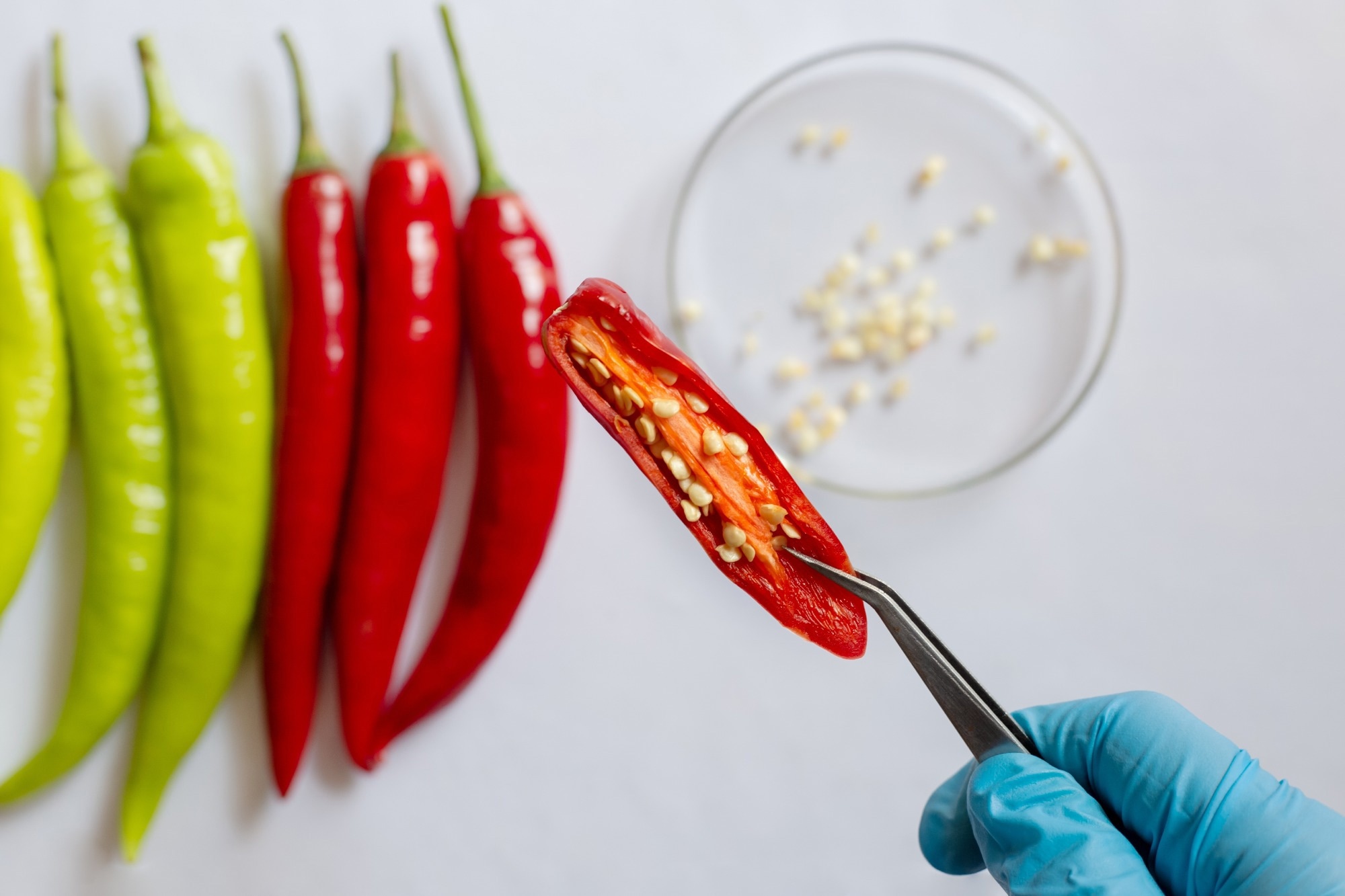Reviewed by Lauren HardakerMay 23 2025
Ever regretted ordering a spicy meal? A new study has identified molecules that can reduce the heat from chili peppers, opening the door to developing an "anti-spice" condiment for overly spicy foods.
 Image credit: S. Singha/Shutterstock.com
Image credit: S. Singha/Shutterstock.com
The research helps explain why some chili peppers taste milder than others, identifying three compounds that both chemical analysis and tasting panel feedback linked to reduced heat intensity.
These findings have numerous implications: they could lead to customized chili pepper breeding, serve as a pain-relief alternative to capsaicin, and provide a new condiment for households with varying levels of spice tolerance.
If you are at home and you have ordered cuisine that has spice to it that is a little too hot for some tastes, you can just sprinkle on a form of chili pepper that has got these suppressant agents in them that will dial it down. I think the idea of using a natural material as an anti-spice, especially for somebody with kids, would have value as a household ingredient.
Devin Peterson, Senior Study Author and Professor, Food Science and Technology, College of Food, Agricultural, and Environmental Sciences, The Ohio State University
Capsaicin and dihydrocapsaicin, two members of a class of compounds known as capsaicinoids, have long been thought to be responsible for the heat intensity of chili peppers. The concentration of these two compounds in each chili pepper is used to calculate Scoville Heat Units, a metric that has been used for over a century to assess a pepper's pungency.
Peterson and colleagues obtained ten chili pepper cultivars and measured their Scoville units based on capsaicinoid content. To ensure consistency, they normalized each dried powder sample so all had equal Scoville heat units. The powders were then mixed into tomato juice, and a panel of trained tasters rated the perceived pungency of each sample.
They are all in the same base and all normalized, so they should have had a similar heat perception, but they didn't. That is a pretty clear indication that other things were at play and impacting the perception.
Devin Peterson, Senior Study Author and Professor, Food Science and Technology, College of Food, Agricultural, and Environmental Sciences, The Ohio State University
Peterson is also the Faculty Director of Ohio State’s Foods for Health Research Initiative.
Using the sensory perception data, the researchers developed statistical models and consulted molecular structures from existing chemical libraries to identify five candidate compounds predicted to reduce the perceived spiciness of the peppers.
A second trained panel of tasters then compared the pungency of various capsaicinoid samples mixed with different levels of these candidate compounds during tests where different samples were placed on each side of the tongue simultaneously.
The results from this second round of sensory evaluations, combined with high-resolution mass spectrometry and nuclear magnetic resonance experiments, allowed the team to narrow down the heat suppression effects to three compounds: capsianoside I, roseoside, and gingerglycolipid A.
These findings describe a general mechanism that influences chili pepper heat levels, but are not limited to any specific chili pepper varieties.
Peterson’s lab investigates the intricate relationships between oral cavity receptors and food compounds that shape human flavor perception. The overarching goal is to apply these findings to enhance the taste of nutritious foods without the addition of sugar, salt, and fats.
What is maybe underappreciated from a science perspective is how important food flavor is to your dietary patterns and your enjoyment in life; so part of what we focus on is, how do we make healthy eating less difficult?
Devin Peterson, Senior Study Author and Professor, Food Science and Technology, College of Food, Agricultural, and Environmental Sciences, The Ohio State University
Capsaicin and related compounds activate TRPV1 receptors in the mouth, which are responsible for detecting the heat of chili peppers. These same receptors are found throughout the body, and capsaicin-based supplements or topical treatments reduce pain by first triggering irritation and then desensitizing the receptors, ultimately diminishing the pain response.
According to Peterson, the newly identified heat-suppressing compounds could potentially achieve similar desensitization without causing the initial burning sensation.
Source:
Journal reference:
Borcherding, J., et al. (2025) Identification of Chili Pepper Compounds That Suppress Pungency Perception. Journal of Agricultural and Food Chemistry. doi.org/10.1021/acs.jafc.5c01448.